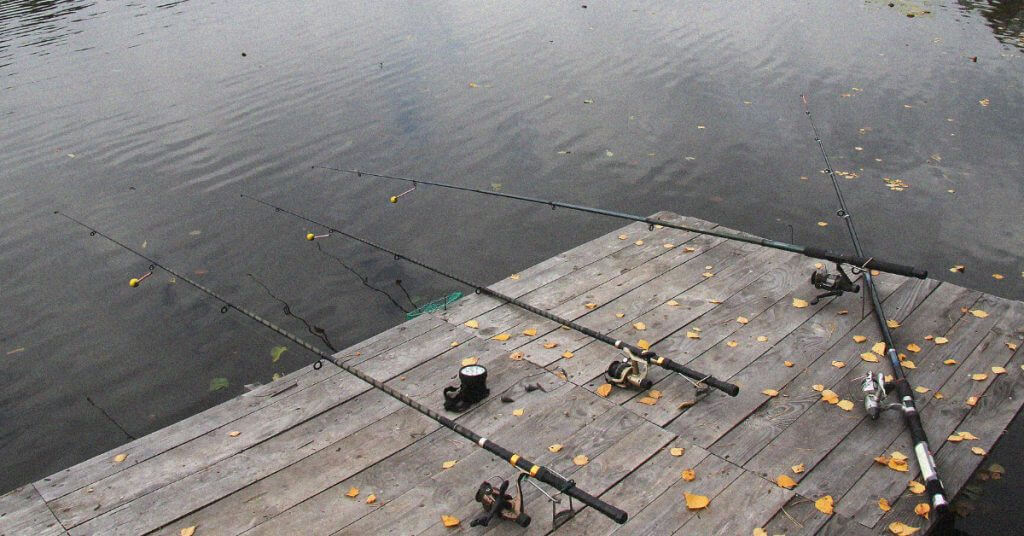Like most youngsters in South Louisiana, I started fishing with a simple cane pole. I can recall riding my bike down the Tchefuncte River where I would catch bluegill with worms under a bobber.
As a teen, I can remember saving up my grass-cutting money to buy the next best fishing rod on the market.
Today, the number of rods I have borders on the edge of insanity, as I have collected one specific rod for every fishing situation.
Needless to say, I know how to choose a fishing rod.
In this article, I will walk you through some factors that I personally consider when choosing my own rods.
I also will bring in some outside expertise through friends that I have made through the years in the fishing industry.
I’ll use their expertise, combined with mine, to form a guide to help you select your next fishing rod.
Table of Contents
Here are three factors that play a huge role in deciding on what fishing rod to choose:
- Species: What type of fish are you targeting?
- Rod Speed: How flexible do you need your rod to be?
- Rod power: How much backbone will you need?
Types of Fishing Rods
Let’s start with the different types of fishing rods. Keep in mind that the names of these rods most often reflect what type of reel is attached.
For example, a rod that is made especially for a spinning reel is called a “spinning rod.”
Baitcasting Rod
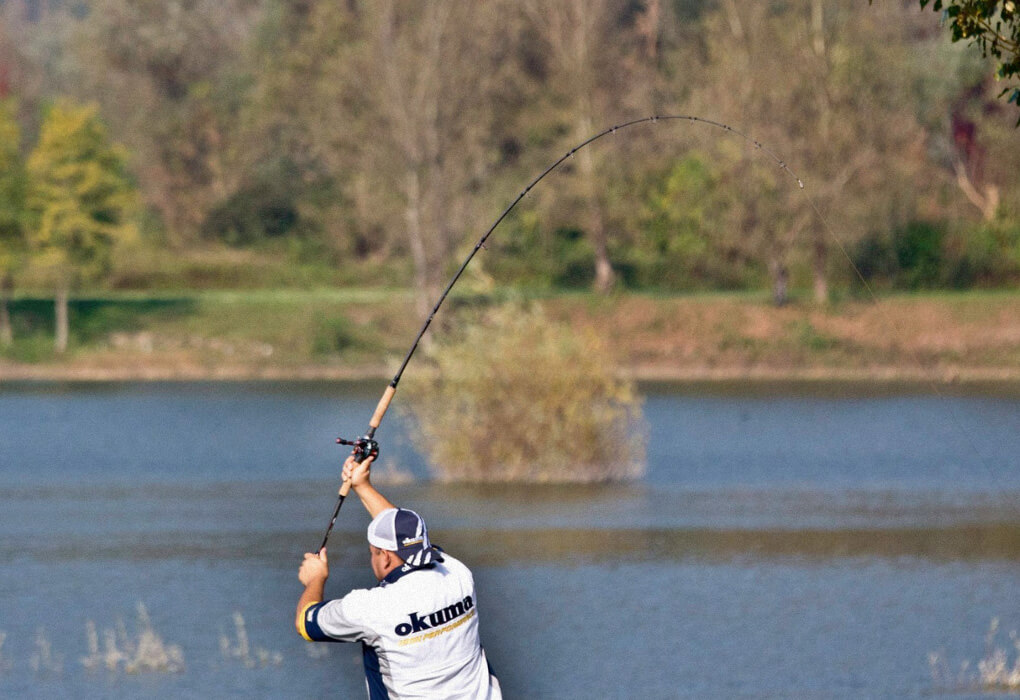
A baitcasting rod is a rod that is specifically manufactured to be paired with a Baitcasting Reel.
Baitcasting rods are easy to recognize by a small trigger that sticks out of the rod right under the reel.
Since a baitcasting reel is mounted on top of the rod instead of hanging underneath it. The purpose of the trigger is to allow the angler to grip the rod and hold the reel up facing the angler.
The guides on a baitcasting rod also face up. This allows the line to flow off of the real and through the guides to the tip of the pole.
Baitcasting rods come in a variety of sizes ranging from 5’5” to 9’ but the most common size is around 6’ to 7’ long.
These rods are a favorite among bass fishermen and are the most used rod of bass tournament anglers.
Pros
Cons
Spinning Rod

Spinning rods are the most common rods on the market because they are paired with spinning reels.
These rods do not have a tongue like baitcasting rods and have guides that run along the bottom of the pole.
The reel seat on a spinning rod is underneath the rod and the guides are also underneath.
These rods range from 4’ to 10’ but the most common size is 6’ to 7’ long.
Spinning rods can be used for fishing live bait on the bottom or using artificial lures.
Pros
Cons
Surf Casting Rod

Surf casting rods are primarily used on beaches and shorelines. A surf casting rod is used to make long casts over the section of the beach where the waves are washing up.
The rods range in size from 9’ to 14’ but the average size rod measures 10’ to 12’.
These rods are made of fiberglass and sometimes even aluminum rod material.
They are extremely strong because they are made to catch larger fish with heavy lure weight.
Surf Casting Rods are very flexible which allows the angler to whip the bait out farther when casting.
These rods are primarily used for fishing with a slip sinker rig using live or dead bait on the bottom. These rods are usually placed in a rod holder on the shore.
Pros
Cons
Jigging Rod
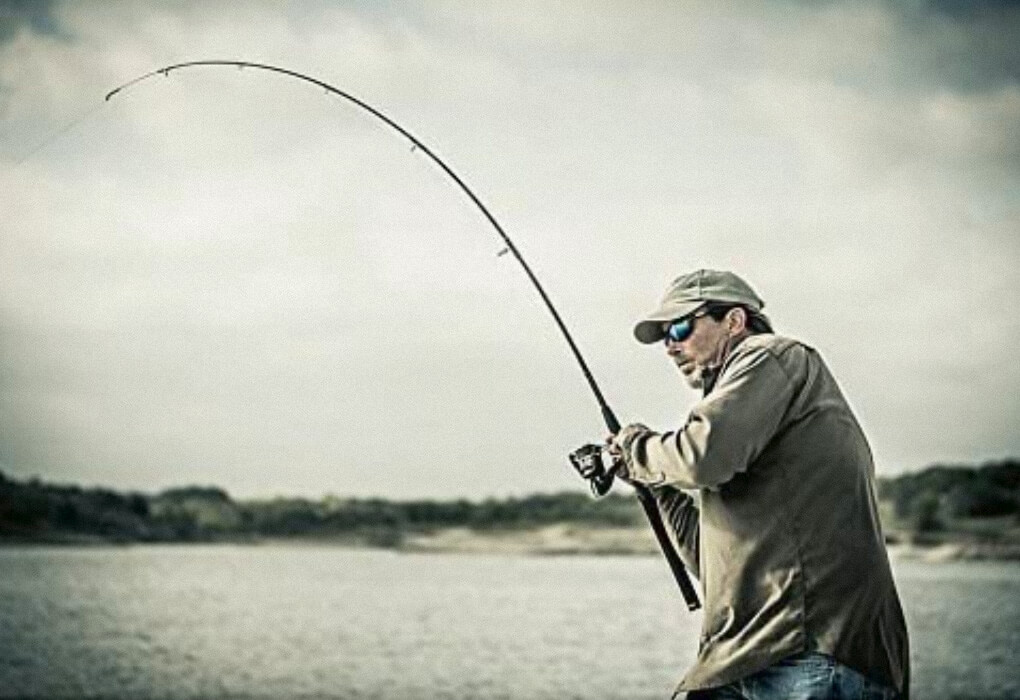
Jigging rods look a lot like fly rods. They are long, thin, and extend anywhere between 9-14 feet. However, most anglers use a rod that is around 10-12 feet.
Jigging rods, or Crappie rods, are made to allow the angler to extend the pole out over the water and lower the lure down into a pile of brush or any underwater structure where crappie are schooling.
The length of the pole gives the angler a wide area of fishable water without moving the boat and disrupting the fish.
Most jigging poles are made of graphite which allows the angler to feel the bite which is often subtle with crappie. Jigging rods are considered finesse rods and are often a one-piece or telescopic.
I’ve personally been fishing with crappie fishing pros and have used these rods; they are invaluable in the world of crappie fishing.
Pros
Cons
Trolling Rod
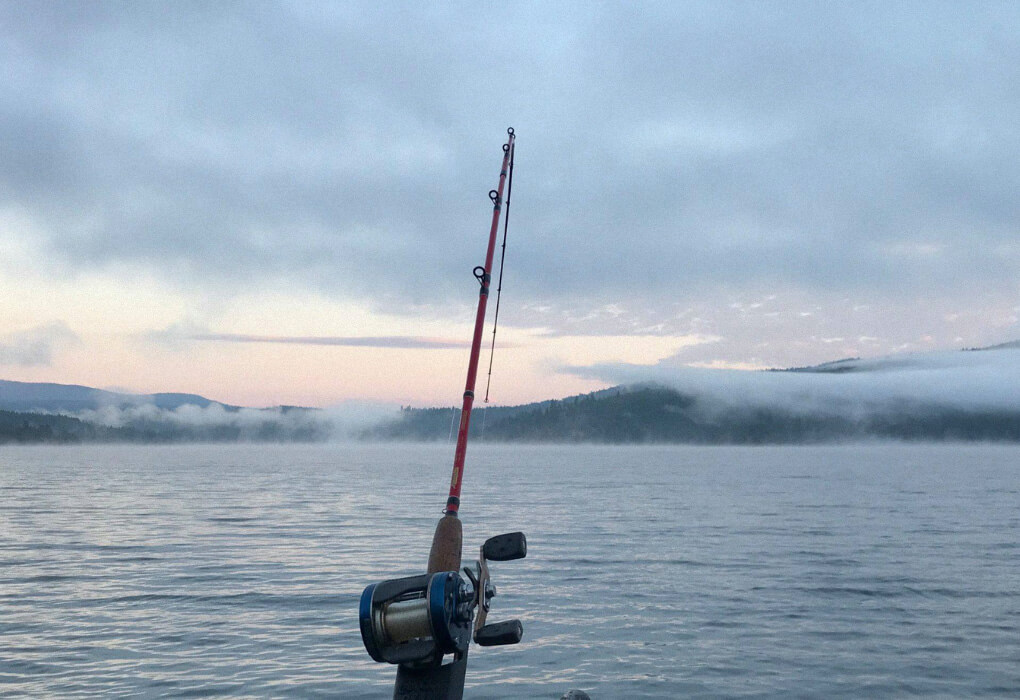
Trolling rods are used when dragging baits behind a boat.
They range in size from 7’ to 12’ with the average size measuring 8’ to 10’’.
Trolling rods are typically fastened in a rod holder which is attached to the back of the boat.
The extra length allows you to troll with several poles at the same time, without getting the lines tangled.
A single boat often uses four trolling rods: one on the left side of the boat. One on the right side of the boat. One on the center-left and one on the center-right.
Pros
Cons
Fly Fishing Rod
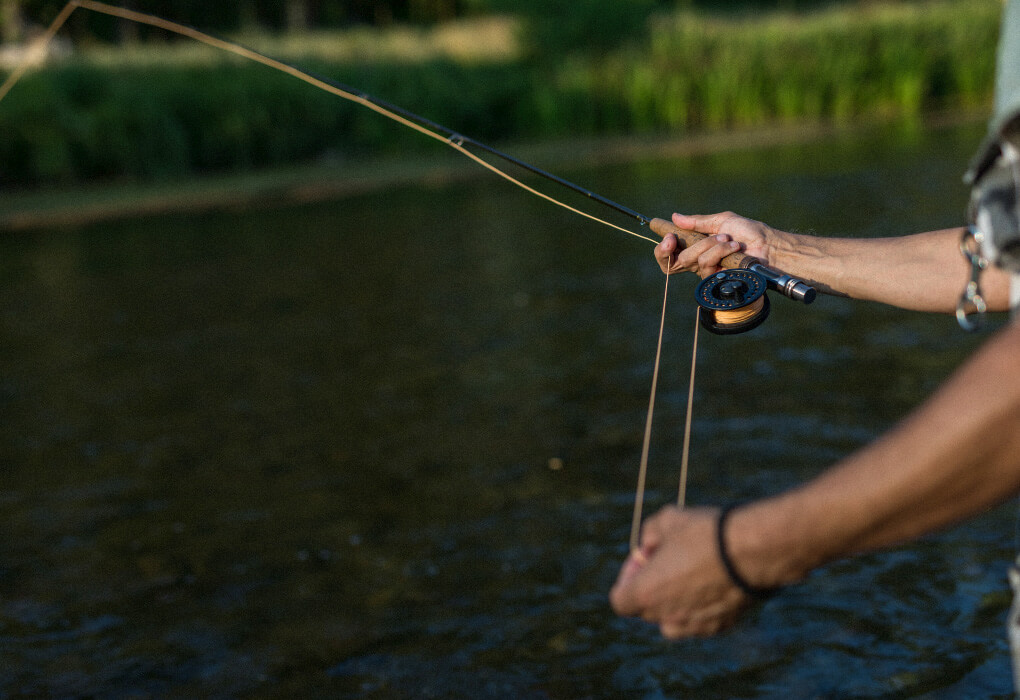
Fly fishing rods are lightweight longer rods that are primarily used for angling in fishing streams and rivers but can also be used when fishing in saltwater.
These light rods are very long ranging from 10’ to 15’ with the average size being 11’ to 14’.
Fly rods are unique in that they don’t cast line out.
The line is whipped back and forth and pulled out of the reel a few feet at a time.
As the angler pulls out more line, the fly moves farther away, eventually landing in the desired spot.
A fly rods guides are on the bottom of the pole and have something called fly line running through them.
This is a fine wire coated with plastic that allows the line to float on the surface.
The benefit to the floating line is that it doesn’t sink the floating fly tied on the end.
Pros
Cons
Ice Fishing Rod

Ice fishing rods are the smallest of all the rods stretching 2’ to 5’ with the average rod measuring 2’ to 3’.
The reason that these rods are so short is that ice fishing anglers are often fishing in compact dwellings where space comes at a premium.
Ice fishing rods are very sensitive and not used to cast. Instead, the line is dropped straight down through a hole in the ice. The angler flips the bail on the reel and waits for a bite.
Pros
Cons
Type of Fish You are Targeting
Now that we’ve covered all the different types of fishing rods, it’s time to start narrowing down what type of rod is best for you.
To do that, you’re going to have to decide what type of fish you want to target. Below is a list of species and what rod you should use to catch that type of fish.
I’ll of course weigh in with the reasoning behind all of my suggestions.
Inshore Saltwater

Redfish, speckled trout, bonefish, drum, sheepshead, and flounder fall into the category of inshore saltwater.
If you are fishing for any of these fish you are probably fishing along the Gulf Coast or any of the East Coast States.
The most popular rod for anglers who fish Inshore Saltwater fish is a spinning rod because it allows you to fish on the surface with a cork or on the bottom with live bait and artificial lures.
Freshwater
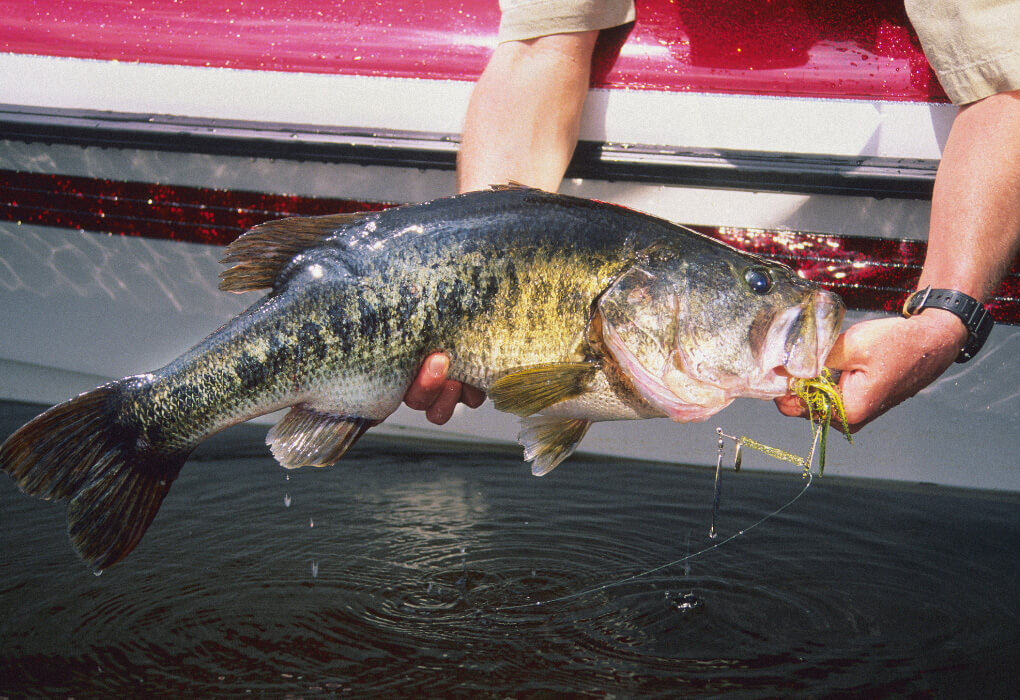
Largemouth bass, smallmouth bass, spotted bass, catfish, rainbow trout, brown trout, salmon, pickerel, panfish, walleye, and crappie are all types of freshwater fish.
Unfortunately, one rod doesn’t cover all of these so I’ll break them down by what rods are used to catch each kind of fish:
Baitcasting Rod
- Largemouth bass
- Smallmouth bass
- Spotted bass.
Spinning Rod
- Catfish
- Rainbow trout
- Walleye
- Panfish
- Salmon
Fly Rod
- Rainbow trout
- Panfish
Jigging Rod
- Crappie
- Panfish
Offshore
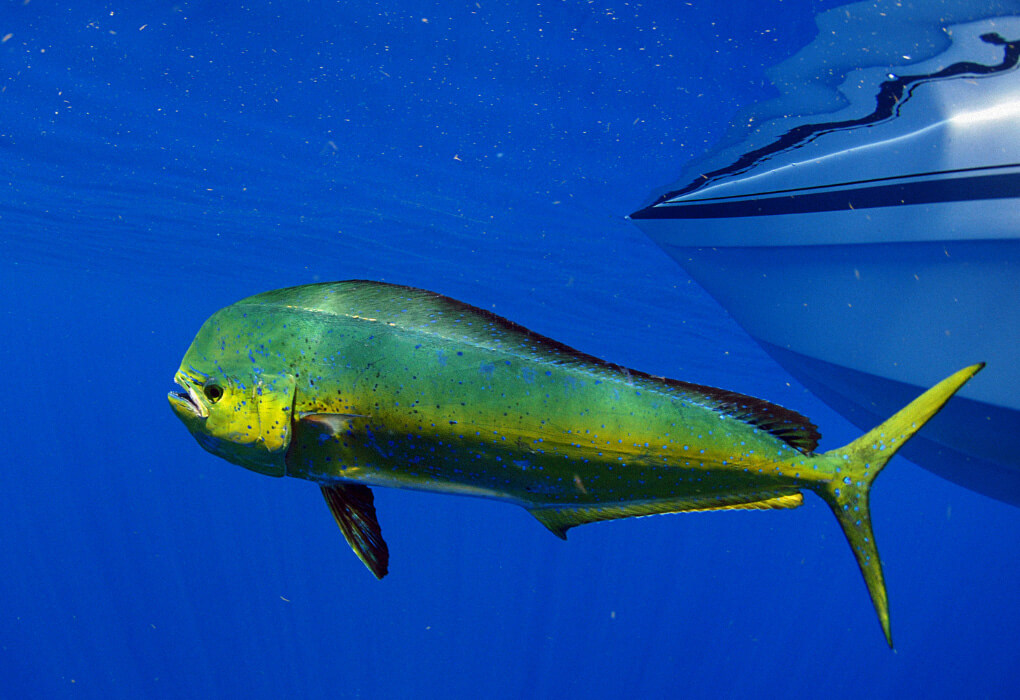
Red snapper, wahoo, pompano, tripletail, spade, tuna, sailfish, mackerel, grouper, and mahi mahi are all fish that are caught in offshore waters.
If you are targeting these fish you’re most likely fishing in the Gulf of Mexico, Atlantic Ocean, or Pacific Ocean.
All of these fish are typically caught using either trolling rods or heavy spinning rods.
The strength and thickness of these rods provide the backbone needed to fish and land these large fish.
Specific Situations
While most fish can be assigned to a certain rod, there are some specific situations that call for a different rod to be used. I’ll cover these situations in order for you to determine what rod is best for your fishing situation.
Fishing From Shore
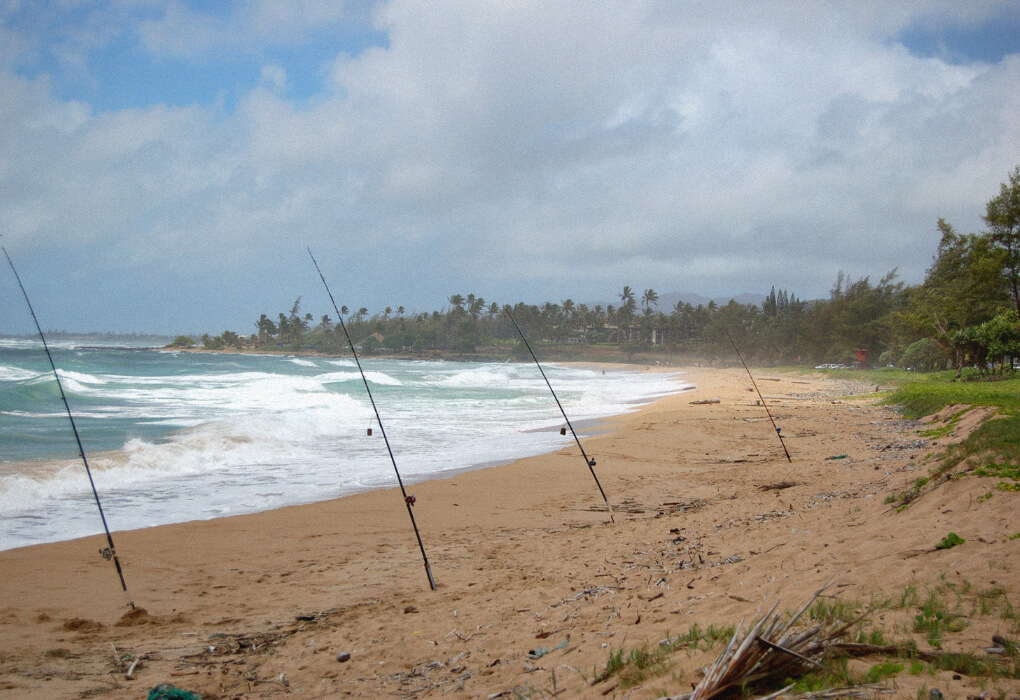
I’m sure you’ve been on a beach vacation and have seen someone sitting in a chair watching their pole that is mounted in the sand.
Chances are that this person was using a surf casting rod. These rods are very flexible with
slow action.
The purpose of the rod being flexible is to be able to sling the lure out farther than an average fishing pole.
As is often the case when fishing on a beach, the waves are crashing up against the shore. This area of the beach is hard to fish, but with a surf casting rod, you are able to cast past the heavy wave action, into the deeper water.
Shark, redfish, drum, sheepshead, and triggerfish can be caught using a surf casting rod.
Kayak Fishing
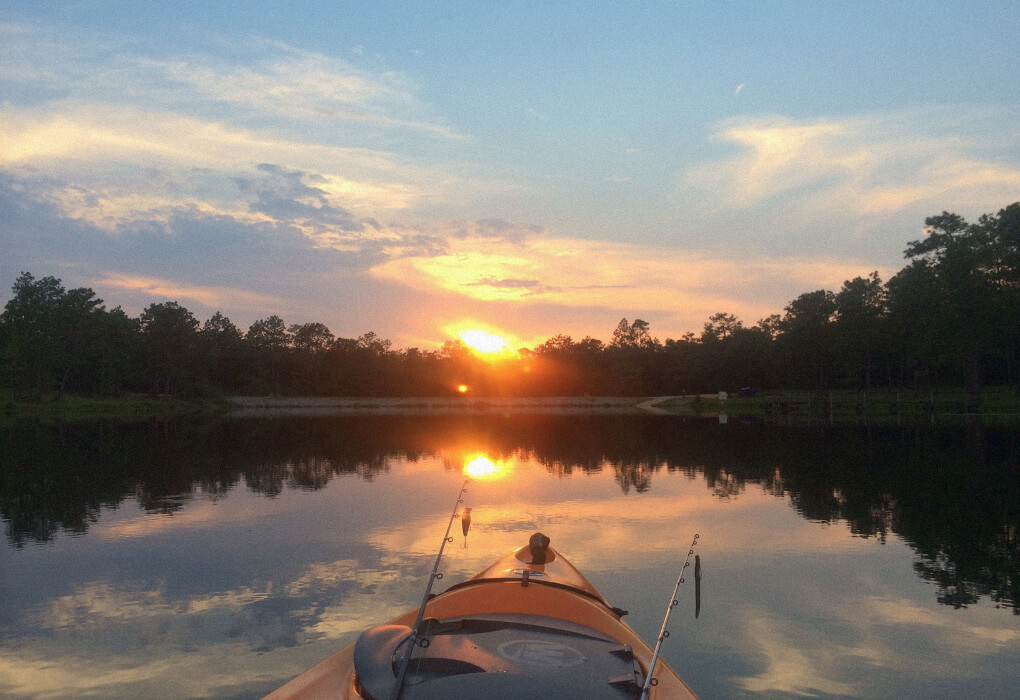
If you plan on fishing from a kayak, you need to think about buying shorter rods under 7 feet. I’d suggest a spinning rod because it offers the most versatility.
You can fish on the bottom, top water, or with a cork. Also, you want to stay away from graphite rods because they are more delicate than fiberglass rods.
When fishing from a kayak it’s inevitable that your rod will come in contact with something whether it be the side of the boat, a paddle, or your legs and feet.
This will lead to the pole being broken eventually.
Rod Specifications
Hopefully, by now, you’ve homed in on a specific rod that you’re going to buy. All that’s left is to know how flexible you need the rod to be.
There are two specifications for rods that let you know how stiff or how flexible the rod is.
Rod Speed
The stiffness of a rod can be determined by something called “speed.”
So let’s take the stiffest rod available.
That rod would be classified as a “fast action rod” because, on a hook set, the line reacts fast. The slower you get, the more flexible the rod gets.
So the most flexible rod would be called a “slow” rod because the line reacts slower when the hook is set.
There are two speeds in between fast and slow.
Those are: medium-fast action rod and medium.
These speeds describe the degrees of stiffness in-between a fast action rod and slow action rod.
Rod Power
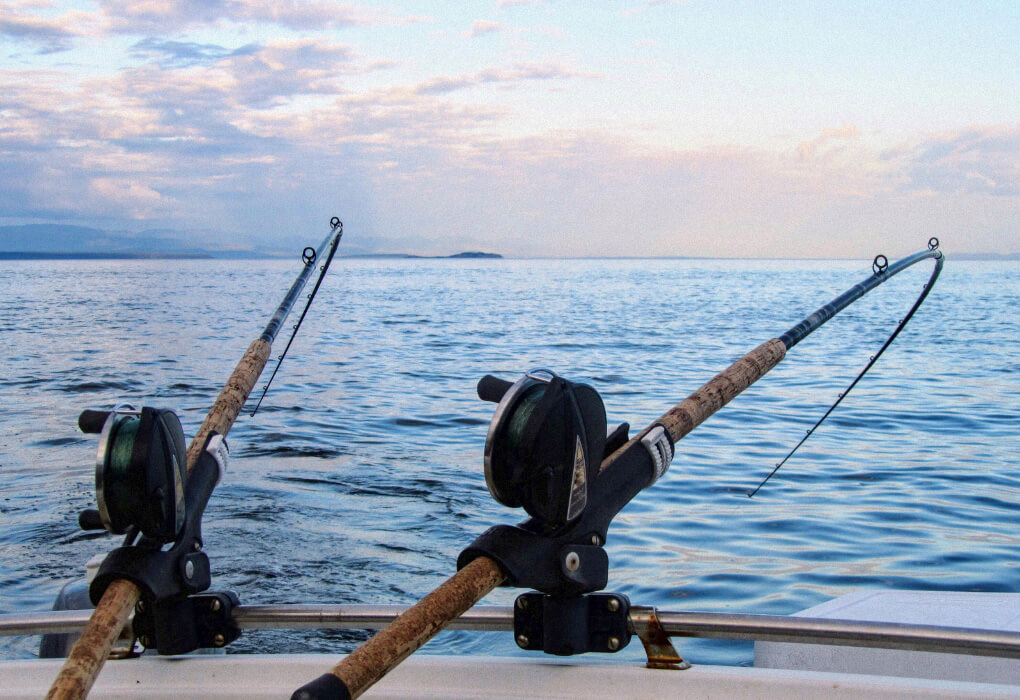
The term “rod power” can be explained by the amount of pressure that is needed to bend the rod at its action rating. Rod power is often referred to as “backbone.”
Ultra-light, light, medium light, medium, medium heavy, and heavy are all power ratings. Power ratings line up with the rod’s lure and line ratings. The heavier the rating, the stronger the rod is.
It’s important to know what species of fish you are targeting when choosing a certain rating.
For instance, if you are catching small fish like panfish you’ll choose a light power rating. Big game fish like catfish and saltwater fish demand a “heavy” rating.
Line Weight
The thickness of the fishing line that you feed onto your fishing pole is known as line weight.
Line weight is rated by how many pounds can be lifted before the line snaps. So if you have-5 pound test fishing line, that means the line is designed to be used for smaller fish under 5 lbs.
You will need to decide what type of fish you’re going to target to decide how heavy your line should be. Most rods have line specifications printed on the butt of the pole near the reel.
Conclusion
Hopefully, after reading this guide you understand a little more about what to look for when selecting a fishing rod.
Remember to take into account what kind of fish you are targeting when selecting a rod. Choosing a good rod will pay dividends in the future as you master the nuances of the rod and learn its strengths.
Also take into account factors like length, power, speed, and rod material. These are all factors that will help you answer the question of how to choose a fishing rod.
I’d love to hear your thoughts on what factors you use to choose your rod. Feel free to comment below!


